For three people who know how to
partyPatrick, Mom, and Dad
Contents
G o to a party in any corner of the world, and youre bound to find a heaping bowl of a savory semi-liquid mixture served with something perfect for dipping, dunking, slathering, or scooping. The dip can be fishy, meaty, salty, garlicky, oniony, spicy it doesnt really matter, because every kind is as good as the next. The things that are dipped range from potato and tortilla chips to fresh or toasted slices of bread to raw vegetables and beyond. Why are dips so popular? Simply because they are an easy, versatile, and tasty way to serve a crowd. And eating with your fingers is always relaxed and fun, the ultimate party icebreaker.
In this country, the dip is a twentieth-century invention. In The American Century Cookbook, Jean Anderson mentions evidence of a clam dip recipe from Mrs. Woodrow Wilson that dated back to around 1918. Anderson believes that it was James Beards groundbreaking Hors dOeuvre and Canaps, published in 1940, that exposed a new generation of cooks to dips and set the stage for their rise to culinary fame.
Dips reached their apogee in the 1950s, when the larger homes of the new suburbia encouraged entertaining and cooks began to experiment with new foods. Old dip recipes always seem to start with a convenience foodan envelope or can of dried or condensed soup, a slab of pasteurized cheese product, a package of frozen vegetablesand they were stirred up in about the same time it took to tear open the bag of chips. Some of them were so delicious that they became American classics (you wont see me turning up my nose at my moms onion soup dip, which is served at every Rodgers party, usually alongside my sister-in-laws seven-layer dip). But as the abilities of cooks improved and their tastes changed, many cooks began to consider the dip warhorses slightly quaint, or even outr.
At the same time, people became more familiar with the foreign cuisines that had served smooth and savory purees, sauces, and spreads as appetizers for centuries. Caponata, bagna cauda, and olivada from Italy; Provenal tapenade and aoli; Thai peanut sauce; spicy Mexican salsas and guacamole; taramasalata, hummus, and baba ganoush from the eastern Mediterraneanall these entered Americas culinary consciousness and recipe boxes. A party dip now meant something more than a carton of sour cream mixed with whatever was in the pantry, and dips acquired a new cachet.
This book explores all sides of the dip phenomenon. For cooks who are looking for nostalgic flavors without the preservatives and sodium found in processed foods, I offer updated, from-scratch versions of the classics. But for fun (and for cooks who simply want to take the easy way outand need all of their dip recipes in one place), I also provide the back of the box recipes for the obvious suspects. Ive come up with new dips for todays tastes, featuring ingredients that Mom didnt have at her disposal when she stirred up her first dip. I pay my respects to the classics of other countries, often adding twists that make them more special and appropriate for a party. And Ive created more than a few dips that will become the ones you want to make for your next bash. You will find recipes for dips that are thicker than the typical sour cream-and-mayonnaise concoctions, and could officially be called spreads. Who cares? I say that if it can be scooped, slathered, or spread, its a dip.
The Dynamics of Dips
Making a dip is as easy as can bemix and serve. But there are a few basic tips that will perfect your dip-making skills.
The number of servings depends on the appetites of the people who are doing the dipping. The guys dipping tortilla chips at a Super Bowl bash will probably eat more than a mixed crowd at a subdued cocktail party. In general, estimate cup dip per person.
Stir the dip in a mixing bowl, not the serving bowl. Few serving bowls are large enough to allow for thorough blending of the ingredients. Transfer the mixed dip to a serving bowl, and always wipe away any drips.
In most cases, tightly cover the bowl with plastic wrap and refrigerate to chill, or just long enough to blend the flavors. The plastic wrap keeps unwanted odors in the refrigerator from mingling with the dip (and vice versa).
Most dips, but not all, benefit from a resting period before serving. Guacamole and some salsas are good examples of dips that are best served very soon after making; if they sit too long, the flavors get muddled. All of the recipes in this book come with make-ahead suggestions, and there are recommendations for reheating the hot dips.
Because the flavors settle and mingle during the resting period, you should taste and reseason the dip before serving. The longer the rest, the more reseasoning may be necessary. Some dips may need a bit of salt and pepper, others a splash of lemon juice. Some dips made with processed foods may seem oversalted to todays tastes. These can often be rescued by stirring in sour cream (but not mayonnaise, which contains salt).
Dips are meant to be indulgent party food, not everyday fare. Nonetheless, feel free to reduce the fat and calorie content of rich dips by using turkey bacon; low- or nonfat versions of mayonnaise, cream and Cheddar cheeses, or sour cream; and other similar products. I am not saying that the dips will taste the same, but if you are already cooking with these foods, the difference will be less noticeable. I prefer to mix low-fat products with regular ones so the change isnt so dramatic (reduced-fat mayonnaise with regular sour cream, for example.)
Some dips thicken when chilled. If a dip becomes too thick to scoop, thin it with an appropriate liquid, preferably one used in the recipe. Sour cream-based dips thin nicely with a splash of milk. Others work better with broth, olive oil, or water.
Dips that contain mayonnaise, raw eggs, meats, or fish should not sit at room temperature for longer than 2 hours. When necessary, replace the bowl of dip with a fresh, cold batch. Here are two ways for keeping a dip cold.
Scoop out a 1-pound round loaf of bread to make a bowl. Freeze for 3 hours, then fill. The bread bowl will keep the dip cold for about 3 hours.
Place the serving bowl in an attractive baking dish and surround it with cracked ice or ice cubes. Place the baking dish on a thick towel or platter to catch any condensation.
If you are looking for a hot dip, note the  icon in the dips title.
icon in the dips title.
There are many options for keeping hot dips warm. I prefer to use a shallow ceramic fondue pot (the kind used for cheese fondue, also called a caquelon) for most dips. It can go into the oven and absorbs the heat so well that it will keep the dip hot for an hour or so during serving without auxiliary heat. For longer periods, place the fondue pot on its stand and keep warm over a flame. Some dips may scorch on the bottom if overheated, so keep the flame very low or even substitute a votive candle for the heating element. A 1-quart mini-slow cooker (bake the dip right in the crockery insert) or a hot plate are good alternatives, but their use is restricted by the location of your electric outlets.





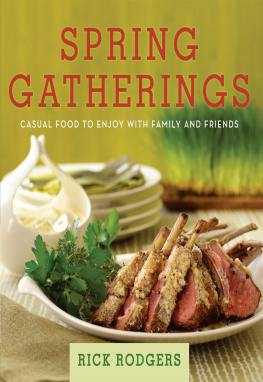
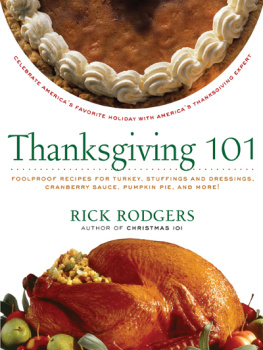

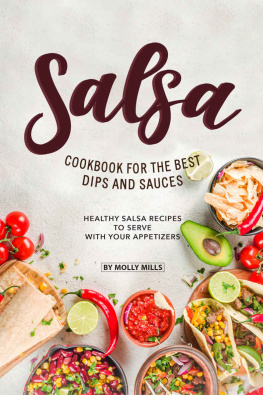
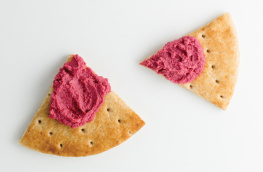
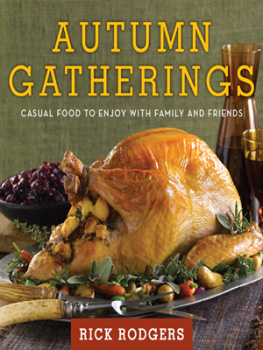
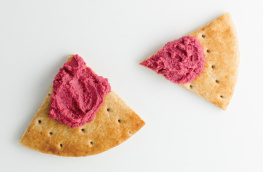

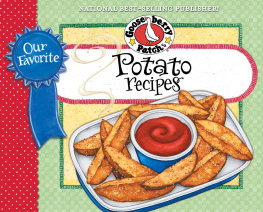






 icon in the dips title.
icon in the dips title.